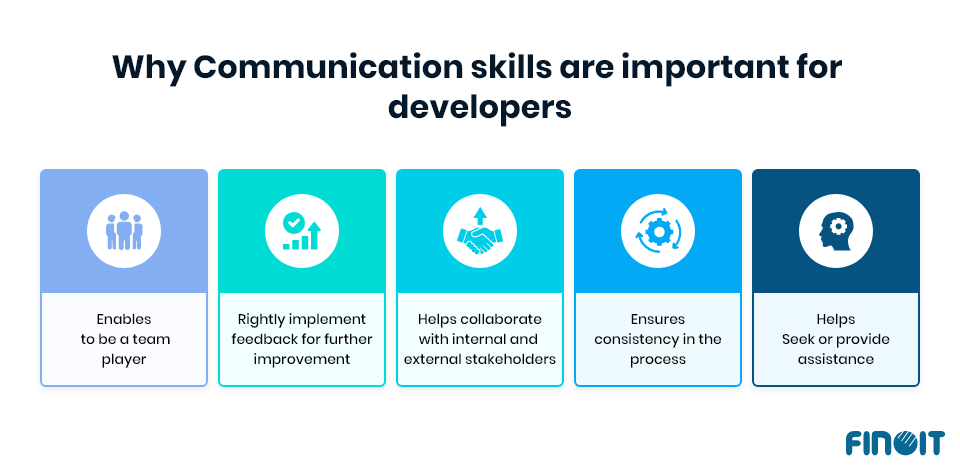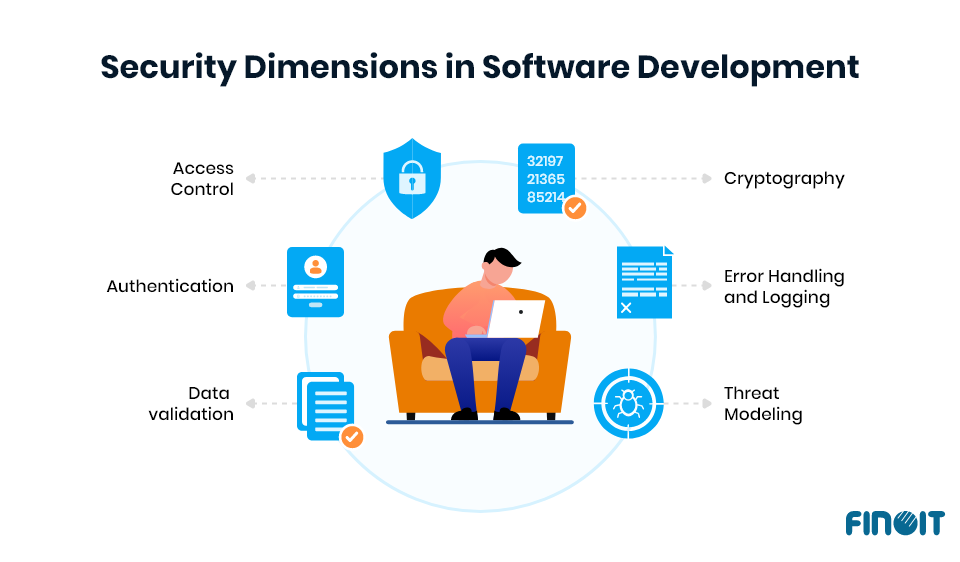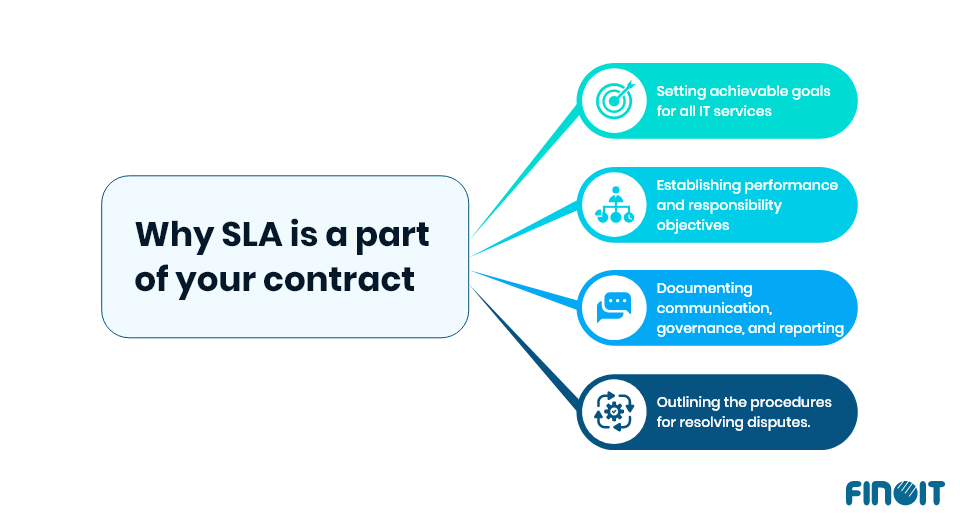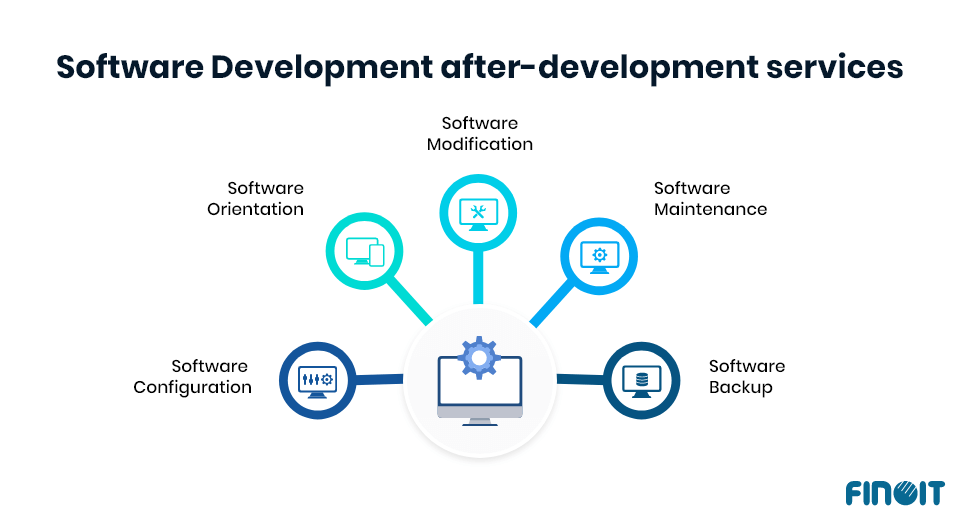Outsourcing Software Development Fails when you ignore These Key Elements

Lee Kuan Yew, Singapore’s founding father and former prime minister, once said, “If you deprive yourself of outsourcing and your competitors do not, you’re putting yourself out of business.”
So true do these words hold true to software development!
Whether you love it or loathe it, outsourcing software development has become an integral aspect of the business world. The pandemic has hastened the trend of offshore development, with many businesses shifting their operations to remote work. Therefore, many enterprises, SMEs, and mid-market businesses are now incorporating software development outsourcing into their top- c-suite agenda.
According to businesswire, the global IT outsourcing market is predicted to reach USD 397.6 billion by 2025, with a CAGR of 4.5%. In light of these figures, which organization wouldn’t want to use a cost-effective approach that allows for better resource dispersion? And keeping his insightful thought, it’s clear that outsourcing is always a smart option.
However, if a business decides to outsource it becomes very overwhelming, as the sheer number of outsourcing vendors available from different geolocations. And most businesses are clueless where to start and what to look for when outsourcing.
However, how do you outsource software development effectively? Well, by identifying and knowing some key elements.
Determining the best partner for outsourcing software development is thus not impossible. To assist, we’ve put up some important things to assist you find the best outsourcing provider.
So without further ado let’s start.
What you should strictly look for when Outsourcing Software Development
“Do what you do best and outsource the rest”- quoted by Peter Drucker – Management Consultant, Educator and Author.
So if you want a thriving business, here are the factors to consider when outsourcing software development
Expertise is what it boils down to
It’s true that the software development industry is constantly evolving and the providers need to keep up with the latest tools and technologies to remain competitive.
Positive experience in a relevant business or industry can bring a range of benefits to a software offshoring partnership, including knowledge, expertise, reduced risk, and increased investor confidence. Choosing a company that has a track record of success in a related industry, you can tap into their experience and expertise, which can help you develop software solutions that are more tailored to the needs of that industry.
Jeanne W. Ross of MIT Sloan’s Center for Information Systems Research said, “Clearly, the thing that’s transforming is not the technology — it’s the technology that is transforming you.” And by partnering with a leading provider that has expertise in the latest technologies, you can be assured that your project will be delivered using the most efficient and effective methods.
Teaming with a company that has a proven track record in a corresponding sector can make your company more enticing to investors. Investors are more inclined to invest in a project if they are confident in its success, which can be provided by a partner with relevant experience and skills.
Good communicators and not just good developers
Be it outsourcing vs in house software development, communication skills are just as important as technical skills. To avail the benefit of outsourcing software development, never select a team of nerds who are coding in a dark room, entirely isolated from the rest of the world.
Benefits of having a team with strong communication skills that you won’t have to put in much effort to get regular updates from the developers. A collaborative and open connection with your software development team can lead to improved problem-solving and more innovative solutions Furthermore, effective communication skills help bridge the gap between business and outsourcing partners in other nations.

Motivation should be a guiding principle
When it comes to offshore software development, the right partner is someone who not only has the technical expertise to develop software but is also motivated by your business and your idea. This means that they are aligned with your goals, vision, and values and are committed to helping you achieve success.
Choose a partner for Offshore Development who is motivated by your business and your idea is important for several reasons. Firstly, they will be more invested in your project and will be more likely to go above and beyond to ensure that your software is of high quality and meets your specific needs. They will also be more committed to meeting deadlines and delivering results, which can help you stay on track and achieve your goals.
Secondly, a partner who is motivated by your business and your idea can bring a fresh perspective to the table. They can offer valuable insights and suggestions that can help you improve your software and make it.
Adaptive development is always the preference
What methodology your potential software development partner leverages is one of the attributes you want to know. How would you know if they have expertise in that? Well-known software outsourcing vendors should have prior experience with different software development approaches.
Make sure that the outsourced vendor implements agile methodologies. Each project brings its own niche requirements forward, which is why having the right agile methodology in place is important. For instance, your software projects outsource may demand an extreme programming approach or rapid prototyping. Evaluating a partner based on these niceties is crucial when considering its ability to leverage the right model.
Yes, exposure speaks
Experience is one of the most significant factors in any venture, and software development is no exception to this. If you are actively looking for an outsourcing partner, your role should be to gather all of the relevant information about a provider’s experience by checking its portfolio, asking for references and reading reviews and testimonials from their past clients.
Previous experience will only illustrate how fit the vendor is for your needs. Therefore, consider outsourcing to vendors with extensive experience in developing products in the areas that are important to your business.
Coding is the cornerstone
Once you’ve determined that you’re dealing with a developer who is trustworthy and on the same page as you, the next important step is assessing their coding skills and abilities.
Statista report says that global IT spending on enterprise software is expected to reach $755 billion by 2023. The reason for this potential elevation is high-quality code that allows businesses to deploy, maintain, and modify commercial software at their leisure. Ensuring high-quality code from the outset can save you time and money in the long run and successfully accomplish your software development project.
In terms of accuracy and quality, the developers must produce codes of high standards. They must possess experience in developing codes and building applications in your business area. Always back your decision to hire software developers with these key elements.
Collaboration comes with the right model
The part you’ve all been waiting for is about the cost to outsource software development. According to Deloitte, 70% of companies choose to outsource their software development projects to save money. So money is a make-or-break factor when choosing outsourcing for software development. The role of pricing and payment model comes here. Businesses that are actively searching to acquire an outsource partner, should keep in mind that there are numerous pricing models available to avoid becoming bogged down by the various procedures necessary in establishing a viable software solution.
With knowing the pricing models, companies can easily analyze their project cost, make an estimated budget and check on the potential cost impacts of what they are paying for and what advantages they will get from their project. So, first get an understanding of all engagement models for software development that a firm has to offer and check which one you would prefer.
Security should be a prime concern
Security is a critical consideration in IT software outsourcing, as it is essential to protect sensitive data and ensure the confidentiality and integrity of the software. Here are some factors to consider when evaluating the security of an outsourcing partner:
- Data Protection: Ensure that the service provider has appropriate data protection and privacy policies in place, and that they have a clear understanding of the client’s security requirements.
- Compliance: Evaluate the service provider’s compliance with relevant security standards, such as ISO 27001, SOC 2, and PCI DSS.
- Access Controls: Make sure that the service provider has strong access controls in place to prevent unauthorized access to sensitive data.
- Encryption: Do check the service provider’s use of encryption, both in transit and at rest, to protect sensitive data.

Mere development won’t do
An end-to-end software development services comprises along with development, post-development support. Also it’s essential to have a service level agreement in place. Why It’s incredibly important to have an SLA with a service partner is it establishes measurable levels for all IT services, setting performance, responsibilities expectations, documenting communication, governance, and reporting processes.

Along with this, discussing after-development support services is also important when outsourcing software development. In fact, it is essential to have a clear understanding of what kind of support will be provided. Some of the key after-development support services that should be discussed and included in the agreement include:
- Software Configuration
- Software Orientation
- Software Modification
- Software Maintenance
- Software Backup

By having a written agreement in place, both the client and the service provider have a clear understanding of what is expected, and what kind of after-development support will be provided. This can help to ensure the success of the project and avoid any misunderstandings in the future.
Professional values matter
A Professional software development company may come in all different sizes and forms, and may have distinctive corporate cultures. Therefore it’s critical to assess each team’s cultural dimensions that includes values and ethics as it affects the work produced, employee satisfaction, and communication effectiveness. You need to appreciate and respect the customs, beliefs, and values of team members from other cultures. This can be accomplished by being open-minded and making a concerted effort to understand cultural differences.
Developers who work for an organization with a toxic culture are likely to create work of lesser quality and show less dedication to their jobs. Making a cultural match is thus one of the most fundamental and impactful variables in determining the success or failure of your software outsourcing.
No success without transparency
This is probably the most difficult aspect to look at when working with software development partners, but it is critical. Honesty, forthrightness, and full/open disclosure are required for complete transparency. There is no hesitation or reluctance to offer information.
Keep in mind, transparency is a strong added feature that must influence your choice as a business while searching for a software development partner. Being trustworthy and transparent are the cornerstones of a well-implemented project and several organizations value transparency in the following ways:-
- Communication effectiveness: Having an open communication between the outsourcing partner the client assists in the tracking of regular updates, progress reports, and feedback sessions, which keep everyone on the same page.
- Leveraging modern tools: Utilizing project management tools allows clients to assess project progress and see what the development team is working on. This can also serve as a central repository for all project-related information.
- Documentation: Keeping comprehensive documentation of the project requirements, design, and implementation gives a clarity of project is going in the right direction.
Professional Liability completes the partnership
Accountability is an important aspect when outsourcing software development, as it ensures that the outsource partner is responsible for their actions and decisions. This is why it is crucial for providers to have professional liability insurance that could help safeguard your organization from potential damage caused by errors or flaws.
One of the most serious risks connected with the software outsourcing is the likelihood that the project would fail due to external circumstances such as pandemics, natural catastrophes, or the third-party going bankrupt. Therefore, your outsourcing partner should have a risk and continuity plan as well as a business continuity mitigation plan in place to help them overcome any issues.
Scope creep is not a nuisance
Imagine you outsource your project to a software development firm. The team discusses and finalizes the actions for the following iteration in the backlog grooming session. After a few days, the product manager announces to the team during a daily stand-up meeting that they must add an extra feature to the sprint. He believes that it will be simple to incorporate, because that feature was designed to be a minor development. However, since the team wasn’t prepared to handle the changes in scope, the task completion timelines are impacted.
Scope creep can be a significant obstacle when outsourcing software development, as it can result in delays, increased costs, and lower quality. For instance, Denver International Airport’s (DIA) automated baggage-handling system witnessed an enormous scope creep. This project was meant to include a completely new automated system for luggage transport and transfers, as well as a fully automated baggage system that would combine all three terminals. However, the project went 16 months beyond its deadline, costing more than the estimated amount. The cause for this failure is that crucial decisions were made with an underestimation of the complexity involved.
Thus, while outsourcing your project to a service provider, ensure that they understand the project scope and have a capable project management team. Ascertain if it has a robust mechanism to handle and manage scope creeps. Remember, for managing scope creep, a software firm needs to have a good change management process.
Evaluate the deal and your readiness
The most successful companies don’t just settle for the first partner they come across – they shop around, compare pricing and services, and ultimately choose a partner who can help them achieve their business goals.” – Tyler Hakes, CEO of Optimist
While looking for offshore partners with varying pricing levels from other countries, it is critical to conduct research and evaluate multiple options before making a decision. This might assist you in locating the appropriate partner for your needs, both financially and in terms of experience.
You might do this by utilizing online search engines to identify companies and freelancers in your industry from across the world. This might provide you with a plethora of possibilities to pick from. After that, you may look at their portfolios, ratings, and prices to get a sense of their experience and pricing.
Equally important is to evaluate your ability to spend, as what you spend must fit your budget.
According to a report by IDC, global spending on information technology and digital transformation is expected to reach $6.8 trillion by 2023. This underscores the need for businesses to carefully plan and budget for their software development projects to ensure that they can allocate the necessary resources to achieve their goals.
However It’s crucial to remember that the budget estimate is only an estimate, and the actual expenses may differ. Yet, it can still be useful in making an informed decision and planning forward for the project.
Be critical of financial competitiveness
Either you operate as an LLC or a general offshoring development partner, you need a financially solid business partner. Most businesses fail due to a lack of funds. It is also one of the most prevalent points of conflict among business owners.
If a person is awful at managing their own personal finances, it is likely that they will be bad at managing your corporate funds as well. Furthermore, if a person is experiencing severe money woes, they will be unable to commit much time, money, or emotion in assisting you in expanding your company.
A live example of how checking the financial stability of a potential business partner can lead to success is the partnership between Apple and Foxconn. Apple conducted a thorough financial analysis of Foxconn before entering into the partnership. This included a review of Foxconn’s financial statements, payment history, and other financial metrics. As a result of this analysis, Apple determined that Foxconn was financially stable and had a strong reputation for quality and reliability.
Longitudinal division comes with benefits
With the ever-expanding scope of outsourcing, you may find a service provider to meet your demands in any corner of the globe. According to statista it is estimated that there are 24.5 million software developers in the world and this number is expected to reach more than 4 million by 2024.

Therefore, you can hire an organization that works in a completely different time zone. However, managing time-zone differences can be daunting as your partner may not be operational at the same time. So, always ensure that the vendor is available throughout your work hours and that they have a process in place for responding to requests and addressing issues in a timely manner. This way time-zone differences will bring benefits with them.
Don’t start without pilot implementations
Choose a partner that you’ve worked with at work, at a nonprofit, or on a project. You should know if they work well in groups and how they handle difficult situations. If you have no prior experience with an offshore development partner, one way to gauge whether a potential partner is a good fit is to work with them on a trial basis.
If you look at the success example of Nokia and Infosys: Nokia, the Finnish telecom company, partnered with Infosys for software development and testing. Before entering into a larger partnership, Nokia conducted a trial period with Infosys, during which they worked together on a smaller project. This trial period allowed Nokia to evaluate Infosys’ capabilities and communication skills, and ensured that the two companies were a good fit before committing to a longer-term partnership.
So, this may involve working on a smaller project together, or setting a specific timeframe to test out the partnership. During this trial period, pay close attention to how well you and your partner communicate, how effectively you work together, and how you handle any challenges or conflicts that arise.
Parting Thoughts
“Do what you do best and outsource the rest.” That’s the advice by legendary business consultant, Peter Drucker.
Several world-renowned startups have grown successful by outsourcing their product development. Some of these businesses made it to the enterprise level, while others became household names. These successful cases show the advantages of outsourcing your software product development to a credible offshore software development agency.
The strategies outlined in this article can provide you an advantage when working with a software development company. Connect with our experts to know how you can build a successful outsourcing strategy for your business.


